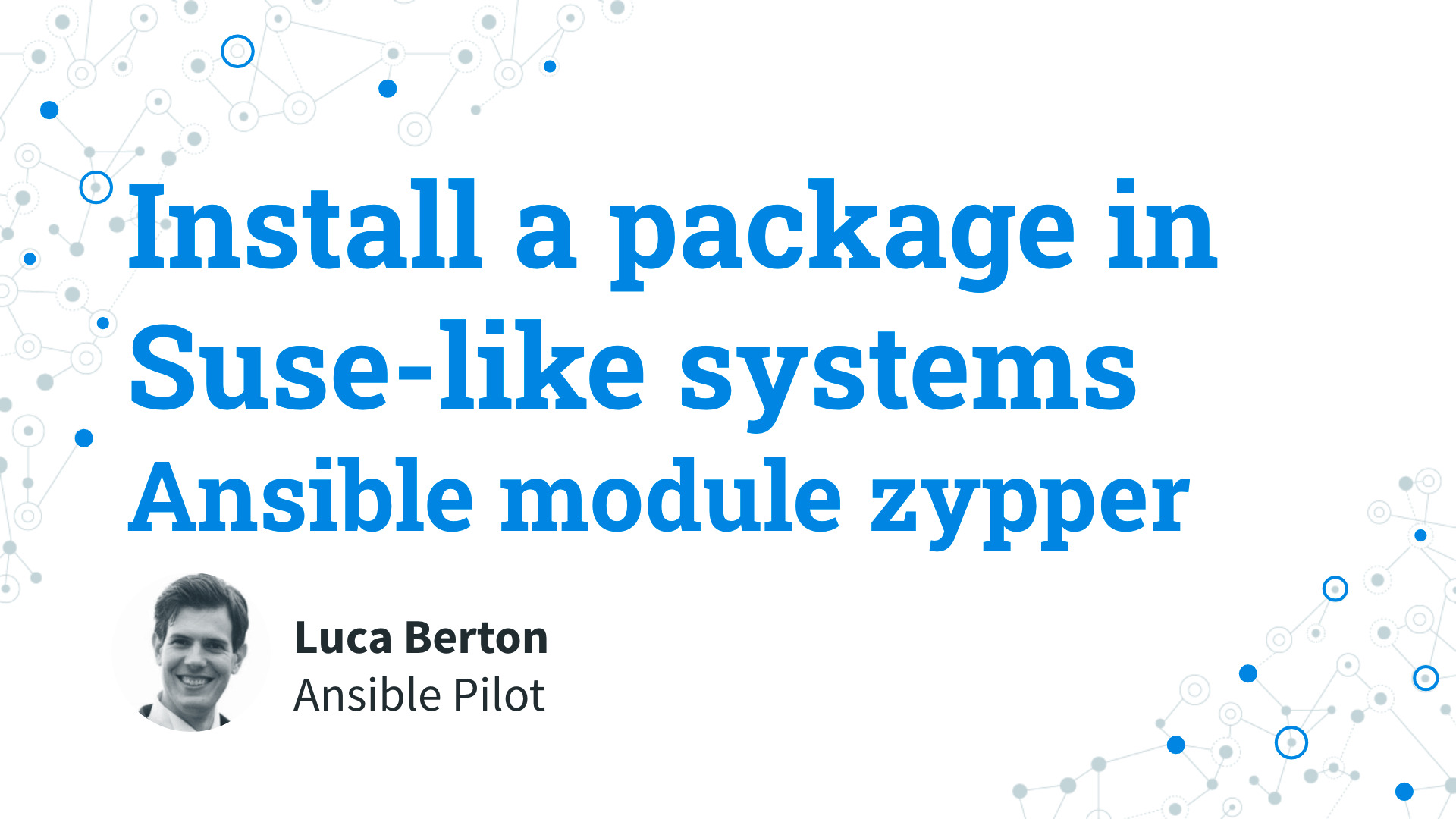How to Install a package with Ansible in Suse-like systems?
I’m going to show you a live Playbook with some simple Ansible code.
I’m Luca Berton and welcome to today’s episode of Ansible Pilot.
Ansible Install a package in Suse-like systems
Today we’re talking about the Ansible module zypper.
The full name is community.general.zypper which means is part of the Community General Collection so maintained by the Ansible Community contributors.
It works on Syse-like operating systems and Manages packages on SUSE and openSUSE via the zypper package manager.
It’s similar to the yum or DNF module for RedHat-like operating systems or the apt module for Debian-like operating systems.
Parameters
- name string - name or package specific
- state string - present / absent / latest
- type string - package / patch / pattern / product / srcpackage / application
- update_cache boolean - no/yes
The parameter list is pretty wide but these four are the most important options.
In the “name” parameter you are going to specify the name of the package or the specific version you would like to install.
The state specifies the action that we would like to perform. In our case for install is “present”.
The type of package to be operated on package / patch / pattern / product / srcpackage / application.
“update_cache” forces to update the repository metadata before the installation. It could be useful to make sure that repositories are up-to-date. The equivalent of console commandzypper refresh.

Playbook
Let’s jump in a real-life playbook to install a package in Suse-like systems with Ansible.
code
- zypper.yml
---
- name: zypper module Playbook
hosts: all
become: true
tasks:
- name: install package
community.general.zypper:
name: dos2unix
state: present
execution
output
$ ansible-playbook -i suse/inventory install\ a\ package\ in\ Suse-like\ systems/zypper.yml
PLAY [zypper module Playbook] *************************************************************************
TASK [Gathering Facts] ****************************************************************************
[WARNING]: Platform linux on host suse.example.com is using the discovered Python interpreter at
/usr/bin/python, but future installation of another Python interpreter could change the meaning of
that path. See https://docs.ansible.com/ansible-
core/2.11/reference_appendices/interpreter_discovery.html for more information.
ok: [suse.example.com]
TASK [install package] ****************************************************************************
changed: [suse.example.com]
PLAY RECAP ****************************************************************************************
suse.example.com : ok=2 changed=1 unreachable=0 failed=0 skipped=0 rescued=0 ignored=0
verification
$ ssh [email protected]
devops@suse:~> sudo su -
suse:~ # zypper se -i dos2unix
Loading repository data...
Warning: Repository 'openSUSE-Leap-42.3-Update' appears to be outdated. Consider using a different mirror or server.
Warning: Repository 'openSUSE-Leap-42.3-Update-Non-Oss' appears to be outdated. Consider using a different mirror or server.
Reading installed packages...
S | Name | Summary | Type
---+----------+---------------------------------------------+--------
i+ | dos2unix | Text converters to and from DOS/MAC to UNIX | package
Conclusion
Now you know how to install a package of a package in Suse-like systems. Subscribe to the YouTube channel, Medium, and Website, X (formerly Twitter) to not miss the next episode of the Ansible Pilot.
Academy
Learn the Ansible automation technology with some real-life examples in my
Udemy 300+ Lessons Video Course.

My book Ansible By Examples: 200+ Automation Examples For Linux and Windows System Administrator and DevOps

Donate
Want to keep this project going? Please donate
